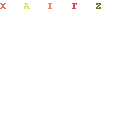
Picbasic Pro Serial Communication
Clockwork Island Adventure (ねじまき島の冒険 Nejimaki-jima no Bōken) is the second movie of One Piece. The movie was shown as a double feature with Digimon: Diaboromon Strikes Back as the Toei Spring Anime Fair for 2001. One piece clockwork island adventure.
4 Shares Tutorial 18 UART Serial Communication Protocol Intermediate Level ★★☆☆☆ In this tutorial, we’ll be discussing our first serial communication protocol (UART). You’ll get to know what is the UART serial communication protocol? How does it work? What are the typical applications for UART? We’ll also discuss in detail the process of creating the required firmware to drive the UART module in our PIC Microcontrollers.
And finally, create a simple communication application MCU-To-MCU and test it out. It’s going to be a very long read with a massive amount of information, So let’s get started! Tutorial Contents • • • • • • • • • • • • • • • • • • • • • • • • • • • • • • • • • • • • • • • Introduction To Serial Communication In Embedded Systems, Telecommunication, and Data Transmission applications, Serial Communication is known to be the process of sending data one bit at a time (bit-by-bit) sequentially, over the serial bus. It takes a complete clock cycle in order to transfer each bit from an end to the other. Conversely, parallel communication is known to be the process of sending several bits, even bytes, as a whole only in a single clock cycle. However, even if you transfer fewer data per cycle with a serial transmission, you can do it at much higher frequencies which results in higher net transfer rates than of the parallel communication. The Fundamental Concepts There do exist many serial communication protocols, each of which is working in a different way.
PICBASIC PRO program to demonstrate reading & writing the hardware serial port without HSERIN/HSEROUT. Defaults to 2400 bps. Apr 3, 2007 - Can any one tell me how to implement this 'Interrupt from PC Jump to another sub routine'part using PIC basic or thru anyother means?
However, it turns out to be some similarity that they do share in common. Frankly speaking, serial communication protocols have Shift Registers somehow/somewhere in their hardware implementation as the working-horse (core). Shift registers are used to shift out the data to be transmitted bit-by-bit each clock cycle. So, let’s dig deeper into a shift register in order to build-up a complete understanding for what is actually happening at the Register(low)-Level. Shift registers are basically some D-Flip-Flops serially connected while sharing the same clock line. Here is a graphical animation that demonstrates how does a shift register work internally. As you might have noticed, the data input (0’s and 1’s) is being shifted from the input pin to the output end at bit-0.
It takes only 1-clock to transfer a single bit, which means it takes 8-clocks for a single byte transfer. For the same of simplicity, we’ll represent the shift register as a single block instead of a series of D-Flip-Flops as shown above. Here is an animation for an 8-Bit shift register with a serial input & serial output data lines. Well, now you should know how shift registers are actually working. Frankly speaking, serial communication is as simple as connecting a couple of shift registers together!
Connecting the data output of a shift register to be the data input of the other shift register enables us of sending digital data serially from an end to another! In the following animation, I’m connecting a couple of 4-Bit shift registers.

One at the transmitter device and the other at the receiver device. The serial bus consists of a couple of wires (data, and clock). Each clock, a bit is sent from the transmitter TX pin and received by the receiver’s RX pin. As you might have noticed, it takes 4-clocks to send the 4-Bit data from the transmitter to the receiver. This is simply the short answer to the “How Serial Communication Works?”.